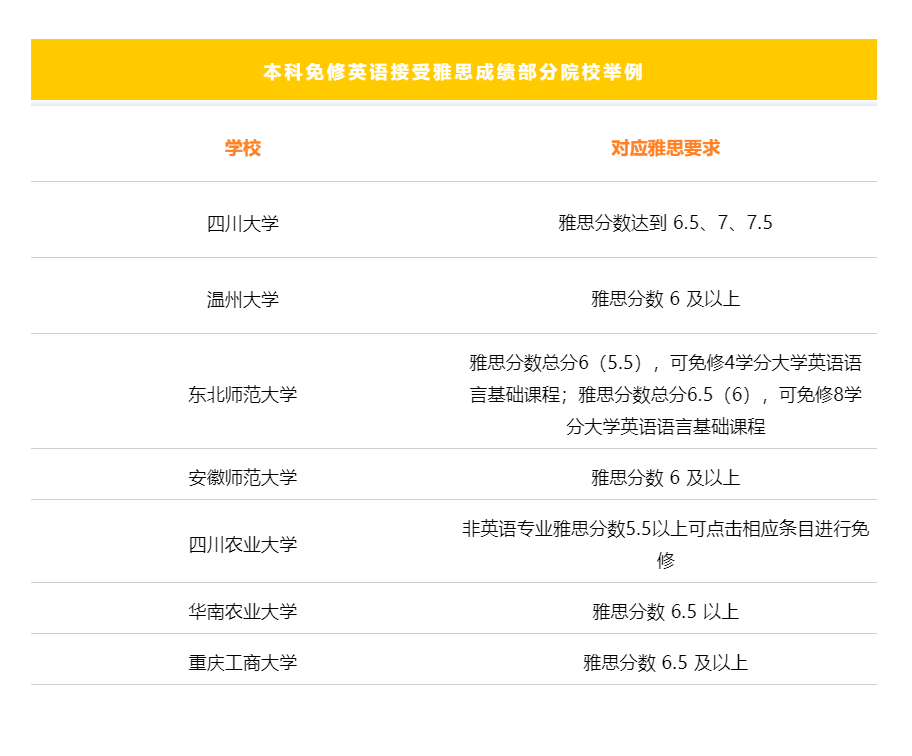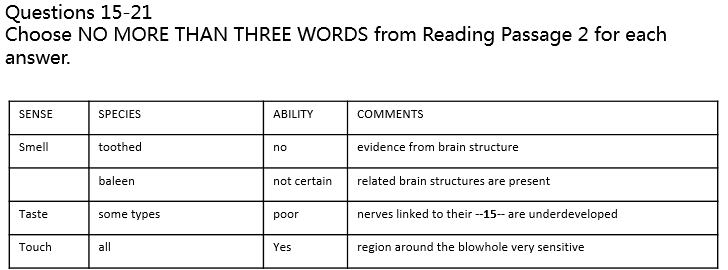Summary是雅思阅读中的重点题型,分为无选项和有选项。下面小编给大家带来了小站名师讲解雅思阅读之摘要填空题型解析,希望能够帮助到大家,下面小编就和大家分享,来欣赏一下吧
小站名师讲解雅思阅读之摘要填空题型解析
一、无选项summary的特征
1、主要针对文章的某一段或某几段的主要内容进行概括或改写,上下句之间有一定的联系。
2、每个空格的间隔时近时远,例如剑7 T1 P1的summary就定位在D段一段中,而剑5 T1 P1的则分散在四个段落中,由此可见定位准确是解题的关键步骤。但考生们不用着急,一般summary的定位还是比较容易的,且大部分是涉及到原文的两三段。即使某道题比较难找到,也可以先做summary的其他题,切勿因小失大。
3、一般是顺序原则,较少乱序。
4、填的答案多是原文原词,很少需要改变语态和词性,相对简单。
二、解题步骤
1、阅读文章的大标题和小标题。其实拿到一篇文章,不论有哪些题型,第一步都要阅读文章的大标题和小标题,大致掌握文章主题和推测文章的写作思路和结构。
2、仔细审题。 (1)注意字数限制(Choose NO MORE THAN TWO WORDS from the passage for each answer. ),一般有只能填一个、不超过两个和不超过三个单词。(2)有时题目会明确告知summary在原文中的起始段落。
3、根据summary的小标题或者首句,回原文确定起始位置。
4、划出第一题的定位词和关键词(指紧挨着空格的并且肯定会被同义替换的单词)。
5、通过关键词及空格前后的逻辑关系来推测所填词的语法特征。(1)常考词性有名词、形容词、动词和副词,但主要以“名词和形容词”为主,在剑桥真题5-9中的summary共63个,名词58个占92%,形容词5个占8%。(2)如果所填词是名词,还可以进一步去预测是人还是物,单复数,有时甚至能推测出是具体物还是抽象物,但还是要根据实际情况而定,不要为了预测而硬预测。
6、回到原文,通过略读定位到题目位置。
7、精读定位词所在的句子,一定要读完整。
8、对应关键词和逻辑关系后,通过语法来确定答案。
9、继续下一题。
三、解题TIPS
1、一定要注意字数限制。有不少考生会因为初次考试紧张而忘记审题,同样的问题在判断题的TRUE和YES中也有体现。
2、如果在题目或者原文中看到this,that,those,these,it等指代词,一定要把指代词的内容搞清楚,因为指代词往往是考点,或者通过指代词所指内容能提示解题。
3、如果定位词所在句子找不到关键词的同义替换或逻辑关系,一般可以往下看一句,最多往下看两句。
4、因为是顺序出题,所以实在是有定位不到的题要学会放弃,先做下一题,然后在上下两题的定位之间再寻找一次。
总而言之,无选项summary是考生必须要得到分数的题型。解题步骤大致为了解文章主题,审题,圈划定位词和关键词,预测语法特征,回原文精读。除了熟练掌握做题步骤和技巧之外,基础语法和同义替换也是加快做题速度,提高正确率的利剑。每次做完题都要认真分析错误原因,是定位不准确,同义替换没背出还是句意或逻辑关系理解错误,并积累每道题目(不论对错)和题目对应原文句子的生词和同义替换。考生不能太过沉迷于技巧,毕竟扎实的基本功和踏实的学习态度才是通过雅思,成功打开国外理想大学大门的钥匙。
雅思阅读机经真题解析--Cosmetics In Ancient Past
A
Since cosmetics and perfumes are still in wide use today, it is interesting to compare the attitudes, customs and beliefs related to them in ancient times to those of our own day and age. Cosmetics and perfumes have been popular since the dawn of civilization; it is shown by the discovery of a great deal of pertinent archeological material, dating from the third millennium BC. Mosaics, glass perfume flasks, stone vessels, ovens, cooking-pots, clay jars, etc., some inscribed by the hand of the artisan. evidence also appears in the Bible and other classical writings, where it is written that spices and perfumes were prestigious products known throughout the ancient world and coveted by kings and princes. The written and pictorial descriptions, as well as archaeological findings, all show how important body care and aesthetic appearance were in the lives of the ancient people. The chain of evidence spans many centuries, detailing the usage of cosmetics in various cultures from the earliest period of recorded history.
B
In antiquity, however, at least in the onset, cosmetics served in religious ceremonies and for healing purposes. Cosmetics were also connected with cultic worship and witchcraft: to appease the various gods, fragrant ointments were applied to the statuary images and even to their attendants. From this, in the course of time, developed the custom of personal use, to enhance the beauty of the face and the body, and to conceal defects.
C
Perfumes and fragrant spices were precious commodities in antiquity, very much in demand, and at times even exceeded silver and gold in value. Therefore they were luxury products, used mainly in the temples and in the homes of the noble and the wealthy. The Judean kings kept them in treasure houses (2 Kings 20:13).And the Queen of Sheba brought to Solomon "camels laden with spices, gold in great quantity and precious stones." (1 Kings 10:2,10). However, within time, the use of cosmetics became the custom of that period. The use of cosmetics became widespread among the lower classes as well as among the wealthy; in the same way they washed the body, so they used to care for the body with substances that softened the skin and anoint it with fragrant oils and ointments.
D
Facial treatment was highly developed and women devoted many hours to it. They used to spread various scented creams on the face and to apply makeup in vivid and contrasting colors. An Egyptian papyrus from the 16th century BC contains detailed recipes to remove blemishes, wrinkles, and other signs of age. Greek and Roman women would cover their faces in the evening with a "beauty mask" to remove blemishes, which consisted mainly of flour mixed with fragrant spices, leaving it on their face all night. The next morning they would wash it off with asses' milk. The very common creams used by women in the ancient Far East, particularly important in the hot climate and prevalent in that area of the globe, were made up of oils and aromatic scents. Sometimes the oil in these creams was extracted from olives, almonds, gourds, sesame, or from trees and plants; but, for those of limited means, scented animal and fish fats were commonly used.
E
Women in ancient past commonly put colors around their eyes. Besides beautification, its purpose was also medicinal as covering the sensitive skin of the lids with colored ointments that prevented dryness and eye diseases: the eye-paint repelled the little flies that transmitted eye inflammations. Egyptian women colored the upper eyelid black and the lower one green, and painted the space between the upper lid and the eyebrow gray or blue. The women of Mesopotamia favored yellows and reds. The use of kohl for painting the eyes is mentioned three times in the Bible, always with disapproval by the sages (2 Kings, 9:30; Jeremiah 4:30; Ezekiel 23:40). In contrast, Job names one of his daughters “Keren Happukh” —“horn of eye paint” (Job 42:14)
F
Great importance was attached to the care for hair in ancient times. Long hair was always considered a symbol of beauty, and kings, nobles and dignitaries grew their hair long and kept it well-groomed and cared for. Women devoted much time to the style of the hair, while not culling, they would apply much care to it by arranging it skillfully in plaits and "building it up" sometimes with the help of wigs. Egyptian women generally wore their hair flowing down to their shoulders or even longer. In Mesopotamia, women cherished long hair as a part of their beauty, and hair flowing down their backs in a thick plait and tied with a ribbon is seen in art. Assyrian women wore their hair shorter, braiding and binding it in a bun at the back. In Ancient Israel, brides would wear their hair long on the wedding day as a sign of their virginity. Ordinary people and slaves, however, usually wore their hair short, mainly for hygienic reasons, since they could not afford to invest in the kind of treatment that long hair required.
G
From the Bible and Egyptian and Assyrian sources, as well as the words of classical authors, it appears that the centers of the trade in aromatic resins and incense were located in the kingdom of Arabia, and even as far as India, where some of these precious aromatic plants were grown. "Dealers from Sheba and Rammah dealt with you, offering the choicest spices..." (Ezekiel 27:22). The Nabateans functioned as the important middlemen in this trade; Palestine also served as a very important component, as the trade routes crisscrossed the country. It is known that the Egyptian Queen Hatsheput (15th century BC) sent a royal expedition to the Land of Punt (Somalia) in order to bring back myrrh seedlings to plant in her temple. In Assyrian records of tribute and spoils of war, perfumes and resins are mentioned; the text from the time of Tukulti-Ninurta II (890-884 BC) refers to balls of myrrh as part of the tribute brought to the Assyrian king by the Aramaean kings. The trade in spices and perfumes is also mentioned in the Bible as written in Genesis (37:25-26), "Camels carrying gum tragacanth and balm and myrrh".
Questions 15-21
Reading Passage 2 has 7 paragraphs A-G.
Which paragraph contains the following information?
Write your answers in boxes 15-21 on your answer sheet.
15 recipes to conceal facial defects caused by aging
16 perfumes were presented to conquerors in war
17 long hair of girls had special meanings in marriage
18 evidence exists in abundance showing cosmetics use in ancient times
19 protecting eyes from fly-transmitted diseases
20 from witchcraft to beautification
21 more expensive than gold
Questions 22-27
Do the following statements agree with the information given in Reading Passage 2?
In boxes 22-27 on your answer sheet, write
TRUE if the statement is true
FALSE if the statement is false
NOT GIVEN if the information is not given in the passage
22 The written record for cosmetics and perfumes dates back to the third millennium BC.
23 Since perfumes and spices were luxury products, their use was exclusive to the noble and the wealthy.
24 In ancient Far East, fish fats were used as cream by women from poor households.
25 The teachings in the Bible were repeatedly against the use of kohl for painting the eyes.
26 Long hair as a symbol of beauty was worn solely by women of ancient cultures.
27 The Egyptian Queen Hatsheput sent a royal expedition to Punt to establish a trade route for myrrh.
文章题目:古代化妆
篇章结构
体裁论说文
题目古代化妆
结构A段:化妆品和香水在古代就已经非常流行
B段:化妆品最早用于宗教和治疗目的
C段:香水和香料在古代是奢侈品,但仍被广泛使用
D段:古时面部护理十分发达,女性广泛使用面霜和面膜
E段:古代女性也将色彩涂在眼睛周围
F段:古代人们非常重视头发的保养
G段:古代的香料运输及贸易
试题分析
Question 1题目类型:
题号定位词文中对应点题目解析
15 recipe; age D段第四句D段主要在讲古代女性非常重视面部护理,第三句话提到一份埃及莎草纸上记载了去除面部瑕疵的方法,这句话中的recipes to remove blemishes...other signs of age可以对应题干中的recipe和facial defects caused by aging,故此题选D。
16 perfumes; conquerors in war G段倒数第二句G段主要描述古代香料运输和贸易,倒数第二句的records of tribute and spoils of war可以对应题干中的were presented to conquerors in war,而perfumes也是相互对应,故此题选G.
17 long hair of girls; marriage F段倒数第二句F段的主旨古代对头发的重视,而倒数第二句话讲到在古代以色列,新娘在婚礼上披着长发以示贞洁,这一句中的brides would their hair long on wedding day as a sign of their virginity和题干中的long hair of girls, special meaning, marriage对应,故此题选F。
18 in abundance;
cosmetics use;
ancient time A段第二句话A段第二句话中的cosmetics have been popular since the dawn of civilization 对应题干的cosmetics use和ancient time;the discovery of a great deal of pertinent archeological material 对应in abundance,故此题选A。
19 eyes; fly-transmitted diseases E段第二句只有E段讲到了眼部化妆,所以答案要在本段找。第二句话末尾处的the eye-paint repelled the little flies that transmitted aye inflammations可以对应题干的关键词,故此题选E。
20 witch craft;beautification B段的第二、三句B段讲到了化妆品最早是用于宗教和治疗目的,之后慢慢开始个人使用,本段是主旨和题干中的witchcraft和beautification对应,故此题选B。
21 more expensive than gold C段第一句C段第一句末尾处提到perfumes at times even exceeded silver and gold in value和题干的信息完全对应,故此题选C。
22 the third millennium BCA段文中并未提到有关香水香料相关记载的具体时间,所以这个信息属于未提及,NOT GIVEN。
23 exclusive C段最后一句题干提到香料仅用于贵族和富人,而C段最后一句的the use of cosmetics became widespread among the lower classes as well as among the wealthy说明穷人也同样使用香料,故此题是FALSE。
24 fish fats; cream D段最后一句题干中的关键词可以和最后一句话中的for those of limited means, scented animal and fish fats were commonly used对应,故此题是TRUE。
25 Bible; the use of kohl for painting the eyes E段倒数第二句E段提及了眼部化妆,倒数第二句中的the use of kohl for painting the eyes is mentioned three times in the Bible和题干对应,故此题TRUE。
26 was worn solely be women
F段第二句F段重点在讲古代人对头发的护理,第二句话中的long hair was always considered a symbol of beauty, and kings, nobles and dignitaries grew their hair long与题干中的worn solely be women矛盾,故此题FALSE。
27 establish a trade route for myrrh G段第三句第三句话提到in order to bring back myrrh seedlings to plant in her temple,并未提到establish a trade route,故此题NOT GIVEN。
参考译文:
古代化妆
A 由于化妆品和香水至今仍在广泛使用,因此,与此相关的一些看法、风俗和信仰的古今比较就显得十分有趣。在文明初期,化妆品和香水就已经十分流行。大量相关的考古学文明的发现表明了这一点。这些物品可追溯至公元前三世纪——细颈的马赛克玻璃香水瓶,石质容器,炉子,烹饪器,黏土罐等等。有些还有工匠亲手刻的名字。在圣经及其它经典著作中也能找到这样的证据,书中描述道:在古代,众所周知香料与香水是享誉盛名的产品。国王和王子都对齐梦寐以求。书面和绘画的描述,以及考古学上的发现,都表明了身体的保养和外貌的美感在古代人们的生活中是多么的重要。这条证据链跨越了数个世纪,详细描述了自有离职记载以来,在不同文化中化妆品的使用方式。
B 然而,在古代,至少是在古代初期,化妆品只用于宗教仪式或以治疗为目的的行为中。化妆品也和宗教崇拜与巫术联系在一起:为安抚不同的神,他们的雕像,甚至是随从的侍者,都会被涂上香膏。经过一段时间之后,为了面部和身体美感的增加以及瑕疵的掩盖,化妆品逐渐发展为个人使用的物品。
C 香水和香料在古代需求很大但十分珍贵,有时甚至超过了金银的价值。因此,它们属于奢侈品,大多用于寺庙或贵族及富人的家里。犹太国王将它们和珍贵的财产放在一起;所罗门示巴女王把物品带到所罗门时, “用骆驼满载香料,大量的黄金和珍贵的宝石。”然而,在那段时间里,化妆品的使用成为惯例,在上层的社会和下层社会被广泛使用。他们用同样的方式沐浴,使用某些物品来软化肌肤,再涂上香油或香膏。
D 那时候,面部护理高度发达,女性对其投入了大量的时间。她们在脸上抹上不同香味的面霜,再化上鲜艳色彩的妆容。在公园前16世纪,一份埃及的纸莎草上详细地记载了去除瑕疵、皱纹及其它衰老迹象的方法。希腊和罗马的女性会在夜间将脸上涂满一种“美肤面霜”, 用于去除面部瑕疵。这种面膜主要由粉末混合香料而成,要敷在脸上一整夜,第二天早上用驴奶将其洗去。在古代的远东被女性广泛使用的面霜,在炎热的气候中尤为重要并且在那一地区十分流行。这种面霜由油和芳香味那一地区十分流行。这种面霜由油和芳香味制成。这些面霜里的油有时从橄榄、杏仁、葫芦、芝麻或者木料和植物中萃取而来。然而,这些方式十分有限,于是芳香的动物及鱼脂也常常被使用。
E 古代女性常常将色彩涂抹于眼睛周围,此举不仅为美化自己,也带有药用的目的。将有色香料遮盖在眼皮敏感肌肤处能够防止干燥及眼部疾病:眼部的油彩能够阻挡传播眼部炎症的小飞虫,埃及女性将上眼皮涂上黑色,下眼睑涂上绿色,然后将上眼皮和眉毛之间的区域涂上灰色或蓝色。美索不达米亚的女性则偏爱黄色和红色,用于给眼睛着色的眼影粉在圣经中被提及三次,并且总是伴随着圣人们对此的不赞同。与此相反,乔布给他其中一位女儿起名为“Keren Happukh”——意为“眼部色彩的象征”。
F 在古代对头发的保养也极受重视。长头发总是被视为美的象征。国王、贵族及地位显赫的人物纷纷蓄起长发并梳洗整洁、小心照料。女性投入大量时间在发型上,虽然并无修剪,但她们会悉心地将头发整齐精巧的编成辫子,有时借助假发的帮助,将头发“建造起来”埃及女性通常将头发蓄至披肩或更长。在美索不达米亚,女性将长发视为审美的一部分。将头发蓄至背部,再编一条粗辫并用缎带扎好,这被视为一门艺术。亚述的女性则留着短一些的头发,她们将头发扎成辫子并在后面束成圆髻。在古代的以色列,新娘在婚礼上要披着长长的头发以示贞洁。然而,普通人和奴隶则通常留着短发,主要是为卫生起见,因为他们无法承担起长发所需护理的花销。
G 在圣经、埃及和亚述的资料中,以及经典著作的作者记载中发现,芳香树脂及熏香的贸易中心位于南部阿拉伯王国,甚至远至印度,一些珍贵的芳香植物在这些地方生长。“从示巴和拉马来的商人用上等的香料与你交易…”。约旦纳巴泰人在这项交易中起了重要的中间人的作用。巴勒斯坦也是一个非常重要的组成部分,因为贸易路线在该国中纵横交错。据说埃及哈特谢普苏特女王〔公元前15世纪)曾派遣一支皇家探险队前往彭特之地(索马里〕,只为带问没药的幼苗以种植在她的寺院中。在亚述人贡物及战利品的记载中,提到了香水及松脂。在图库尔蒂时期的文献中提到,阿拉姆国王将没药的球状物作为贡品的一部分给予亚述国王。香料与香水的贸易在圣经力吉妮西斯的描述中也被提及,“骆驼在这黄蓍胶(用于制作珐琅制品)香膏及没药。
参考答案:
Version 22116主题古代化妆
15
D
16
G
17
F
18
A
19
E
20
B
21
C
22
NOT GIVEN
23
FALSE
24
TRUE
25
TRUE
26
FALSE
27
NOT GIVEN
雅思阅读之摘要填空题型解析相关文章:
★ 雅思阅读题型解题小技巧
★ 雅思阅读解题技巧
★ 雅思阅读如何搞定判断题
★ 雅思听力填空题解题全过程中你该注意这些事
★ 雅思历年真题回顾及其思路解析
★ 雅思作文真题解析及范文
★ 雅思阅读解题小技巧
★ 3点思路和10个必知助你提升雅思阅读正确率
★ 雅思阅读练习方法
★ 备考雅思阅读必备知识
雅思阅读之摘要填空题型解析
上一篇:雅思阅读短期冲刺方法
下一篇:返回列表






